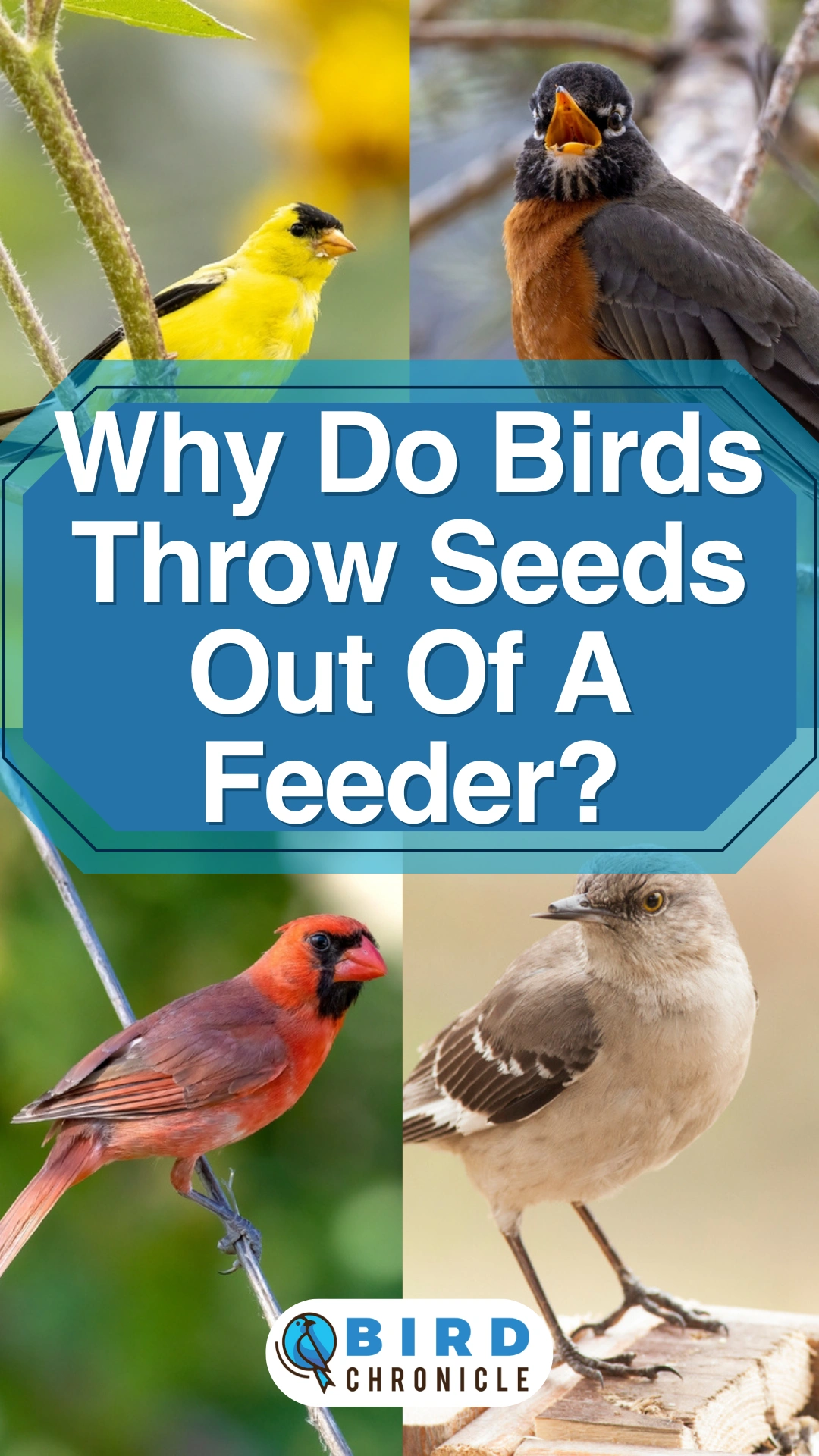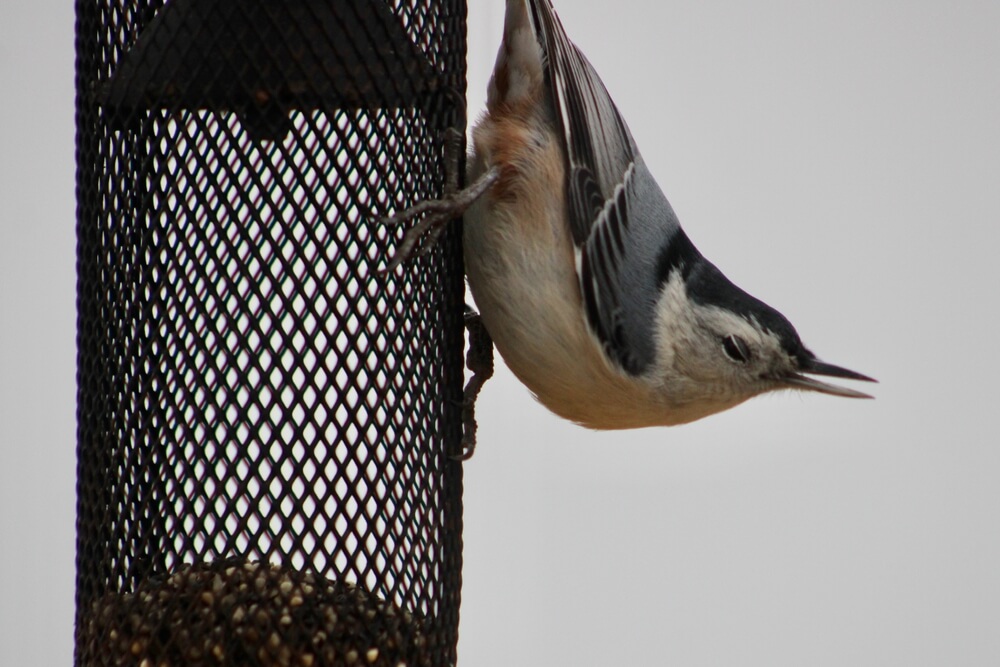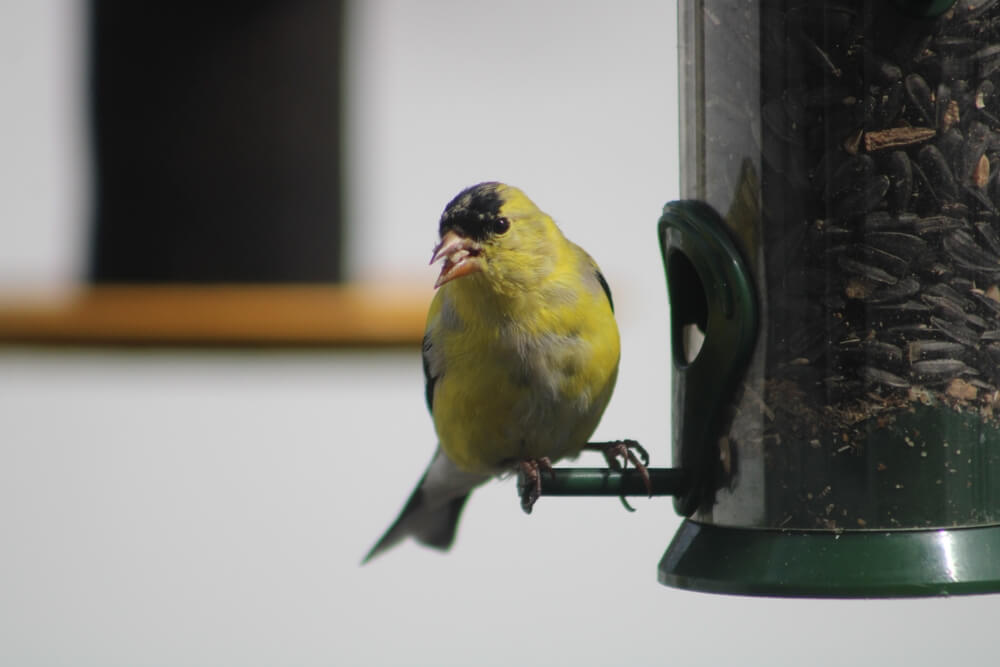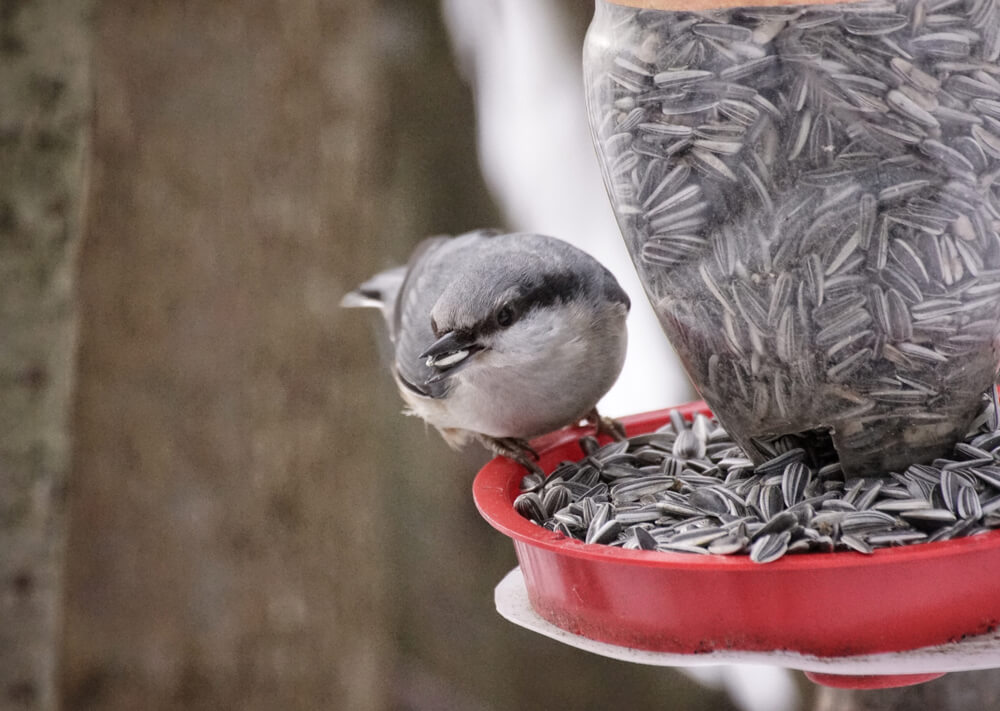Often, bird seed can be seen in excess laying on the ground under bird feeders.
While an adventurous squirrel may be partly to blame, most often, the birds have thrown the seed out of the feeder.
Birds throw seeds out of a feeder for various reasons. Seeds can be knocked off accidentally as birds perch and grab food from a swinging bird feeder. However, most of the time, birds are intentionally sorting through the seeds, knocking some to the ground. This is because they are looking for a particular size and kind of seeds. They eat high-quality seeds that are not moldy, germinating, or immature.

This article goes on to explain the reasons why birds throw seeds out of a feeder, as well as ways to reduce the amount of seed loss.
7 Reasons Why Birds Throw Seeds Out Of Bird Feeders

The amount of food that a bird eats depends on its species, size, activity, and climate. For example, smaller birds eat more, and birds eat more in the winter.
Different species of birds eat different kinds of foods, and some species are primarily seed eaters.
Birds that eat seeds have thick, cone-shaped beaks (bills) which include birds such as sparrows, finches, songbirds, and grosbeaks.
Birds do not have teeth but have a gizzard (ventriculus) to assist them in further grinding up food into smaller particles. Some birds will go a step further and swallow stones or grit to assist in the grinding process.
1. Inedible Hulls
Birds like to eat the edible and softer inside of a seed because their digestive enzymes do not penetrate seed shells. They remove the outer hard shell, or hull, off, discard it, and then eat the inner kernel.
Some species of birds, such as quails and pigeons, will swallow seeds whole, eating the outer hull. They use their gizzard and swallowed stones to further grind it up.
Ways Birds Remove The Hull
Birds, such as sparrows and finches, crunch seed hulls by moving their jaws up, down, and sideways in a circular motion.
In conjunction with their tongues, this motion splits the seeds’ hulls, extracting the kernel for consumption. The inedible hull falls to the ground.
Seed-eaters such as nuthatches and chickadees do not chew. They carry a seed to a nearby perch, holding it with their toes wedged onto the surface.
Then they peck the seed open with their beaks. In this case, you may find hulls away from the feeder on the ground.
2. Scratching And Kicking

Ground-feeding birds such as spotted towhees and some sparrows instinctually double-scratch, dig, or kick leaf litter when looking for food.
If they fly up to a bird feeder, they will continue to scratch and kick, throwing seeds to the ground.
3. Low-Quality Seeds
Commercially bought seeds for bird feeders are processed by machine from the stalk all at once.
As a result, immature seeds can end up in the harvested pile. Other seeds could be defective, without an internal kernel.
Birds can examine the weight of seeds to determine if the inside is ready for eating. If not, then it is discarded to the ground.
4. Undesired Ingredients Or Size

Birds will throw seeds and other bird seed ingredients that they don’t like from the mixture.
These may include food such as red milo seed, cracked corn, wheat, and other fillers, as well as undesired seed sizes.
Birds will sort by throwing these undesired parts or seeds that are too large to the ground to get to the seeds they want to eat.
Many seed-feeding birds like seeds such as black oil sunflower, safflower, and white proso millet.
5. Germinating Seeds
A germinating seed is one that is beginning to sprout.
If the bird seed is not getting eaten up quickly and moisture settles in, then the seeds can sprout. Birds will throw these seeds from the feeder to get to the dry, and desired ones.
Wet bird seeds can also clump, or stick together, making it more difficult for birds to eat.
6. Moldy Or Old Seeds

If seeds have sat in a damp environment, they can start to rot or mold. These seeds can harbor bacteria that are harmful to birds if consumed.
Birds tend to avoid or kick away any moldy seeds.
Birds often are disinterested in old seed from the previous year, since they can detect that it is not fresh, even if it looks okay to the human eye.
7. Accidental Spilling

Accidental spills from the bird feeder can also occur and they fly in and out of a bird feeder.
Most feeders will move as the bird lands upon it, as well as move from the bird’s eating actions.
As seeds are pulled out of the feeder holes, the force or gravity of the subsequent seeds can push more out than intended. This spillover can land on the ground.
Table- or tray-type feeders have large open spaces which make it easy for birds to push seeds to the ground.
Consequences Of Seeds On the Ground

Ground-feeding birds will eat seeds that fall to the ground.
However, these seeds can also pose some undesirable consequences such as the following:
- Untidy yard
- Seeds attract rodents, such as mice, chipmunks, and squirrels (which can also carry diseases)
- Ground seeds can become moldy, posing a health risk to birds and other animals
- Some seeds’ oils are toxic to or alter the soil composition for the grass to grow, thus killing it
- Seeds can germinate and grow underneath the feeder, replacing the grass
How To Prevent Seed Loss

While accidental seed throwing is going to occur no matter what, you can take steps to reduce the number of seeds falling to the ground.
Consider the following:
- Pouring: Pour the seed into the feeder over a tray or tarp so you do not leave spilled remnants on the ground.
- Quality seed: Buy high-quality bird seed without fillers that are also non-germinating. Opt for combinations with sunflower, safflower, nyjer, or white proso millet.
- Single-seed feeders: Have separate feeders with only one kind of seed in each one. Then only birds that eat that kind of seed will come to the feeder, and will not kick away undesired seeds.
- Quality feeder: Buy a quality feeder with a roof on it to keep water out.
- Table or tray-style should have a lip around the outer edge.
- The feeding ports should be small.
- Tube feeders release a small amount at a time.
- Suet feeders hold the seeds together, allowing the bird to peck out individual pieces of seed (however they can get wet and grow mold).
- Cleaning: Clean the feeder, each time before you refill it.
- Use a mild soap and warm water solution.
- Rinse clean and allow it to fully dry.
- Check after rain: After rainy periods, make sure the seeds are not wet and develop mold or germinate.
- Seed catcher: Hang a sieve or catcher tray underneath the feeder to collect falling seeds.
- Placement: Place the feeder over flagstone, tray, or rocks for easy cleanup and to prevent germination.
- Ground cleanup: Rake or use a leaf (garden) vacuum to pick up seeds from the ground.
This video further discusses how to avoid wasting bird seed:
In Conclusion
Birds throw seeds out of a bird feeder when they sort for desirable, high-quality seeds that their species prefers in size and taste.
Birds will also throw away any moldy, germinating, or immature seeds.
Seeds are easily knocked to the ground as well when birds land on a hanging bird feeder.
Seed loss from a feeder is nearly unavoidable, however, it can be reduced by trying strategies.
These include ways such as ensuring you have a feeder with a rain roof, using individually-filled feeders with only one kind of seed in them, and putting down a collection tray or sieve for spilled seed.












